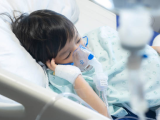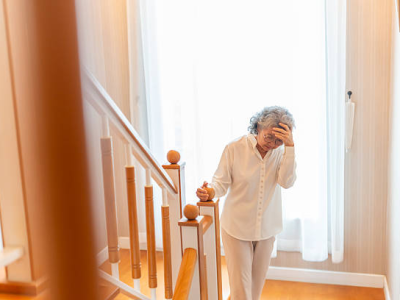Two studies published late last week in The Lancet Infectious Diseases characterize COVID-19 passengers on the Diamond Princess cruise ship, one finding that some infected patients have a lung infection with viral shedding but no symptoms, and the other suggesting that advanced age, severe lung involvement, and reduced lymphocyte count are risk factors for disease progression.
Cruise ships are a unique, confined environment that simulate the living conditions and social interactions of a city, offering researchers the chance to define viral shedding patterns and patient antibody responses before and after symptom onset in a mostly older population with different ethnicities and immunization and health statuses, the authors of the first study noted.
"The proximity of passengers and crew members in a semi-enclosed environment, with interactions in the dining halls, recreational rooms, spas, and pools, creates a unique environment for the person-to-person transmission of microbes," they said.
The Diamond Princess cruise ship was quarantined in Yokohama, Japan, in February amid a COVID-19 outbreak that sickened 712 (19%) of 3,711 passengers, killing 13.
Combination of tests for diagnosis, contact tracing
In the first study, researchers in Hong Kong recruited 215 adult passengers who had tested negative for SARS-CoV-2, the virus that causes COVID-19, on reverse transcription-polymerase chain reaction (RT-PCR) 4 days before disembarking and being transferred to another location to quarantine further.
The passengers were screened using RT-PCR and serology for antibodies against the novel coronavirus upon entering quarantine and 4, 8, and 12 days later. Nine (4%) of 215 passengers were hospitalized after testing positive for COVID-19.
Eight of the nine patients (89%) tested positive for coronavirus after RT-PCR of nose-throat swabs at baseline, and all nine were positive for COVID-19 antibodies on serologic testing by day 8. Eight patients tested positive on RT-PCR and antibody testing at the same time.
One passenger, who tested positive on antibody testing but not on RT-PCR, had abnormal chest computed tomography (CT) findings characteristic of COVID-19. Five of nine patients (56%) with abnormal CT findings had higher levels of anti-nucleoprotein-IgG antibody on days 8 and 12 and higher anti-RBD IgG antibody on day 12 than patients with normal CT findings.
Six of nine passengers (67%) had no symptoms during the 14-day quarantine, while two (22%) had short-lived fever.
The six asymptomatic patients were younger (median age, 57 years) than the three symptomatic patients (median age, 68 years), had a higher baseline viral load on RT-PCR, and tested positive for anti-nucleoprotein IgG antibody at baseline more often (four [67%] patients vs none).
Three (33%) of the nine patients with COVID-19 were men, and six (67%) had underlying illnesses, including high blood pressure, heart disease, diabetes, abnormal cholesterol levels, evidence of previous tuberculosis, and goiter. Median patient age was 58 years.
"A combination of RT-PCR and serology should be implemented for case finding and contact tracing to facilitate early diagnosis, prompt isolation, and treatment," the authors wrote.
Inflammation-associated lung findings
In the second study, researchers in Japan retrospectively looked at data from 104 Diamond Princess passengers hospitalized with COVID-19 at the Self-Defense Forces Central Hospital in Tokyo from Feb 11 to 25. Forty-three (41%) had no symptoms on admission, while 41 (39%) had mild illness, and 20 (19%) had severe disease.
At the end of observation, 33 (32%) of 104 patients were asymptomatic, 43 (41%) had mild illness, and 28 (27%) had severe disease. Serum lactate hydrogenase (LDH) levels were significantly elevated in the 10 patients who were asymptomatic on admission but later developed symptoms, compared with the 33 who had no symptoms throughout the observation period, 3 (7%) of whom required supplementary oxygen. High LDH levels indicate lung damage.
Seventeen (52%) of 33 patients who had no symptoms during the observation period had abnormal lung CT findings.
Five (21%) of 41 patients with mild disease at hospitalization later developed severe disease and needed supplemental oxygen. Of the 71 patients with symptoms at the end of observation, 14 (20%) needed extra oxygen, and 1 (1%) needed mechanical ventilation. All patients survived.
Patients with severe illness were older than those with mild disease (median age, 73 vs 60 years) and had more significant lung involvement (13 of 28 [46%] vs 9 of 43 [21%]; P = 0.0055) and lower levels of infection-fighting lymphocyte white blood cells (16 [57%] vs 10 [23%]; P = 0.0055) at hospitalization.
Further analysis found no significant differences in the distribution of age, sex, and underlying illnesses or prevalence of abnormal lung findings and CT patterns between patients with and without symptoms.
Half of the patients had underlying illnesses, and fever and cough were the most common symptoms. Fifty-four patients (52%) were men, and median age was 68 years (range, 25 to 93).
"Patient assessment with determination of serum LDH and chest CT imaging might facilitate the successful dedication of medical resources to patients who are at increased risk for disease progression in the setting of mass infections, as well as in normal clinical settings," the authors wrote.
In a commentary in the same journal, Eng Eong Ooi, MD, PhD, and Jenny Low, MBBS, MPH, of Duke-National University of Singapore Medical School said that the significantly elevated serum LDH in presymptomatic patients may indicate that pyroptosis, a type of programmed cell death, could be responsible for initiating lung inflammation and symptoms.
"Besides the extent of pulmonary infection, differentiation between symptomatic and asymptomatic outcomes might be related to the type of host response to infection," they said.






















